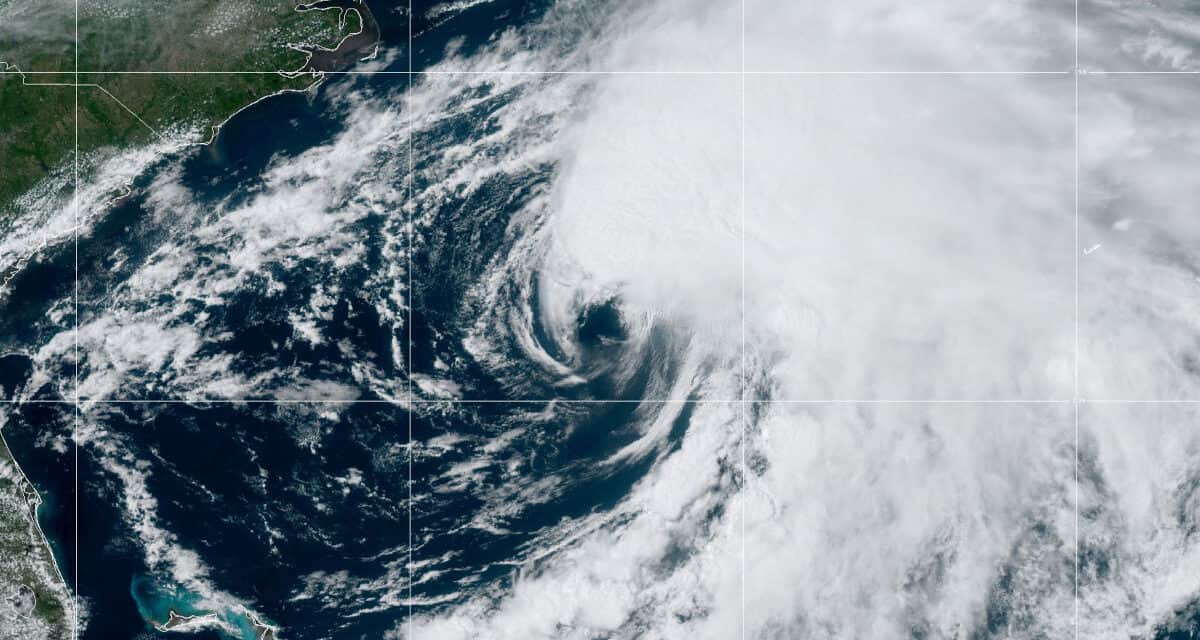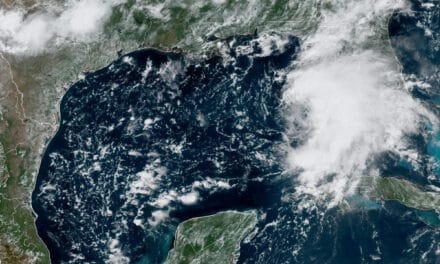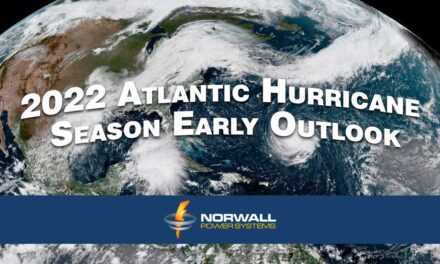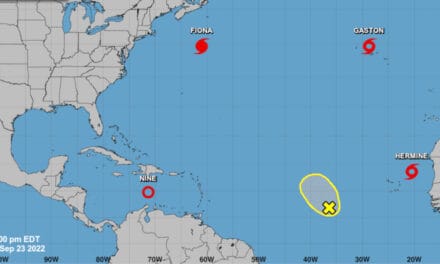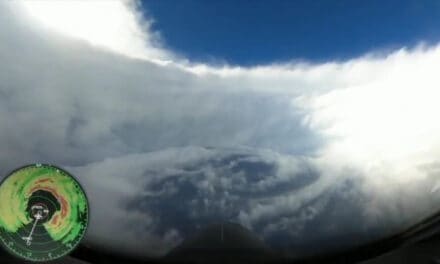Tropical Storm Alex as it moves east of Florida towards Bermuda. Alex is the first named storm of the 2022 Atlantic Hurricane Season. NOAA GOES East satellite image.
Alex Formed from Remnants of Eastern Pacific Hurricane Agatha
Tropical Storm Alex formed early Sunday Morning after crossing the Florida Peninsula from the Gulf of Mexico into the Atlantic. Potential Tropical Cyclone 1 formed over the Gulf from the remains of Hurricane Agatha, the strongest Eastern Pacific hurricane to make landfall in Mexico in May. The potential storm skirted north of Cuba with heavy rains and gusty winds, at nearly tropical storm strength before crossing Florida north of Lake Okeechobee. Alex is the first named storm of the 2022 Atlantic Hurricane Season.
The National Hurricane Center issued Tropical Storm warnings and watches ahead of the anticipated landfall, but later canceled them because the storm never formed. A tropical storm warning remains in effect for Bermuda. The forecast path for Alex will take it just north of Bermuda, but the strongest wind field and the possibility of storm surge will impact the island nation.
Forecasters at the National Hurricane Center expected Alex to form over the Gulf and had given the storm a 90 percent chance of turning into a tropical storm before arriving in Florida. Although the 2022 forecast calls for an above average season, it is the first season since 2014 that did not have a named storm before the official June 1 season start.
Tropical Storm #Alex has formed in the western Atlantic - the 1st named storm of the 2022 Atlantic #hurricane season to date. The average 1st Atlantic named storm formation date (based on data from 2000-2021) is June 15. pic.twitter.com/ip0NAvirsT
— Philip Klotzbach (@philklotzbach) June 5, 2022
Alex Kicks Off an Above Average Season

The Colorado State University Department of Tropical Weather & Climate Research is an authoritative source for Tropical Weather Forecasting. The first outlook in December called for an above average season with an ENSO (El Niño Southern Oscillation) shift from La Niña to neutral Pacific Ocean conditions. Most outlooks issued by various organizations changed in April with the first forecast issued included 19 named storms, 9 hurricanes, and 4 major hurricanes.
Have You Prepared for the 2022 Atlantic Hurricane Season?
Cool equatorial waters in the eastern Pacific are a La Niña, while warmer waters are an El Niño. The cycle shifts over a period ranging from two to seven years, including the neutral phase when the ocean surface temperature is near normal instead of warmer or cooler than normal. ENSO affects weather in North America, the Caribbean, and Atlantic Ocean, with cool neutral to La Niña conditions bringing more tropical weather to the Atlantic Basin.
CSU’s latest forecast update issued June 2 increases the likelihood of a major hurricane landfall on the United States and in the Caribbean.
2022 Hurricane Season Forecast Update June 2
| Named Storms | 20 | 14.4 |
| Hurricanes | 10 | 7.2 |
| Major Hurricanes (category 3 or higher) | 5 | 3.2 |
| Accumulated Cyclone Energy* | 180 | 123 |
Source Colorado State University Tropical Weather & Climate Research.
*A measure of the potential for wind and storm surge destruction.
Warm Atlantic Ocean temperatures are another factor in the updated forecast. Sub-tropical and mid-latitude sea surface ocean temperatures (SSTs) are much warmer than usual. Tropical ocean SSTs are also above normal.
CSU expects above normal chances for major hurricanes to make landfall on the United States and Caribbean coasts.
Here are the 4 PM CDT Jun 3 Key Messages on Potential Tropical Cyclone One (#PTC1) which is forecast to soon become a Tropical Storm.
— National Hurricane Center (@NHC_Atlantic) June 3, 2022
Heavy rains could lead to considerable flash and urban flooding across South Florida and the Keys. See https://t.co/tW4KeFW0gB for more info. pic.twitter.com/Gu9kVzaPe0
Potential Tropical Cyclone One (#PTC1) brought 10 inches of rain to parts of Miami-Dade and Broward, causing severe flash flooding in some areas. Most of the rain is now moving offshore to the east. Unfortunately, even a disorganized tropical system can cause significant impacts. pic.twitter.com/YUcsVgspf1
— Dr. Levi Cowan (@TropicalTidbits) June 4, 2022
A Standby Generator Automatically Provides Backup Power, Even in a Hurricane.
2022 Hurricane Season Preparedness
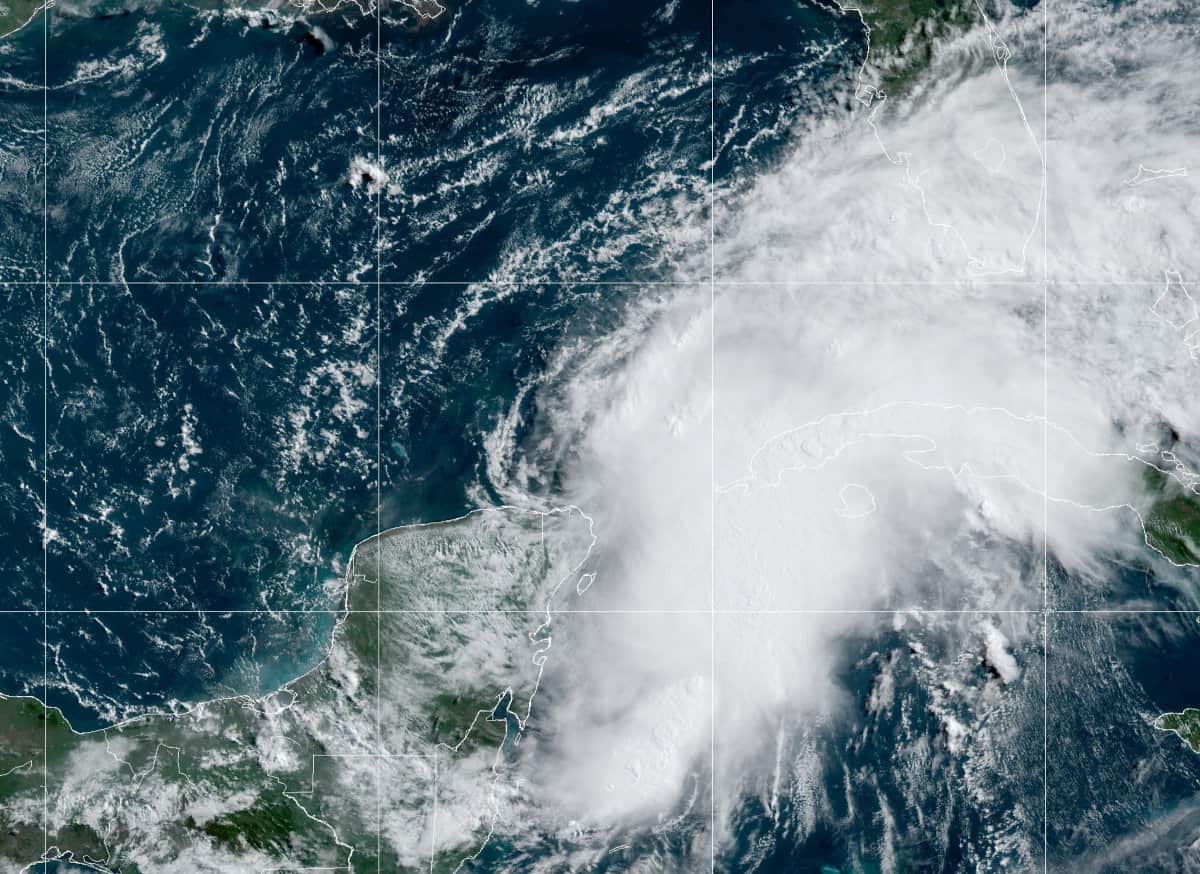
Potential Tropical Cyclone One on June 2 as it Moves into the Gulf of Mexico from the Mexico Coast. The cyclone formed from the remnants of Hurricane Agatha, the strongest May eastern Pacific hurricane to hit Mexico since record keeping began in the 1940s. The Cyclone became Tropical Storm Alex on shortly after midnight on June 5, 2022. NOAA GOES East Satellite Image.
Anyone living along the United States coastline or in the Caribbean, including Puerto Rico, should prepare in advance. Once a storm forms, time and resources become limited. Those who are unprepared panic and store shelves empty. Building materials for strengthening homes sell out, and generators are among the first to disappear. When officials issue evacuation orders, unprepared residents don’t know their evacuation zones, planned evacuation routes, or what to take or not take. Many don’t know the locations of shelters.
7 Hurricane Preparedness Planning Steps to Do Now
The NHC issued the first forecast advisories for Potential Tropical Cyclone One on June 2 at 4:00 PM CDT. Just one and a half days later, the storm’s wind and rain began to affect southwest Florida and the Florida Keys. Although it did not fully form as a tropical storm before arriving in Florida, it had tropical storm force winds that reached 50 MPH.
It is not unlikely that a storm could intensify rapidly over a few days, especially as the season nears its peak, from a potential cyclone to a major hurricane.
The 2020 hurricane season turned into an intense, rapidly developing season that broke records from May through October. In June, most organizations had only predicted about 20 named storms. That turned into 31 before the season ended on November 30.
Hurricane Preparedness
- Hurricane Hazards and Risk Factors
- Make a Hurricane Evacuation Plan
- Hurricane Preparedness Kits and Supplies
- Hurricane Insurance Checkup and Updates
- Prepare Your Home for Hurricanes
- Help Neighbors with Hurricane Preparedness
- Complete Your Hurricane Preparedness Plan
- Emergency Preparedness Tips
- How to Prepare for a Power Outage
- 10 Tips to Survive a Hurricane Disaster
- FEMA Recommends a Generator
- Hurricane Disaster Preparedness
Did you Know? Hurricanes and Tropical Storms Cause Widespread Power Outages when Flooding, Wind, and Tornadoes Destroy Local Power Grids.

